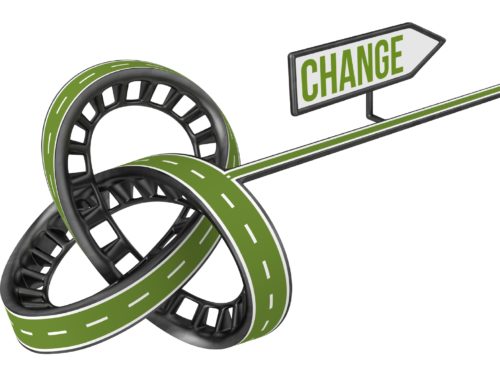Fourteen senators leave the state. 60,000 plus show up to demonstrate. And, the next thing you know there’s a national debate on the role of public employee unions in the state budget crisis occurring throughout the country.
Those who support the unions see this as a not-so-veiled attempt to alter the essence of collective bargaining and limit the people’s right to protest. Union members see it as a fundamental challenge to their right to organize, and in some cases, a violation of their contract. The union leadership no doubt sees it as payback for supporting Democratic and pro-labor candidates.
Those who support the various initiatives view this as a much needed step to reign in spending that is out of control. They view unions as – at worst – the enemy that have secured salary and benefits that are unavailable to them as private sector employees. “Why should government employees experience no pain when they are out of work,” they ask. There are probably even Republicans who view this as the perfect opportunity to weaken a political opponent.
The problem with perceptions is that it only takes one act to prove you are right. As the saying goes, “All Indians walk in single file. I know that to be true because the one I saw was doing it that way.”
So let’s look at the facts:
- State government budgets are in the toilet. This is not a Wisconsin, Blue State, Big Labor, or even a Rust Belt issue. California, Ohio, New Jersey, and New York have made the news. Louisiana, Colorado, Virginia, North Carolina, South Carolina, Arizona, Nevada, and Texas should all be added to the list. This is a sustainability issue.
- The time for easy answers is over. In fact, those times ended when the stimulus money from the Federal government dried up. The choices are to cut services, cut people, or cut the cost of delivering the services.
- Cutting employees has to be considered, but it is no one’s favorite idea. Who wants to be the elected official that puts people out of work at a time when we need people working? And at some point, cutting people is the same as cutting services.
- Cutting the cost of delivering services is the most palatable idea. You are not putting people out of work or cutting service to citizens. It is also low-hanging fruit that allows the politicians to claim that they are limiting the cost of government. And, that’s a good thing, right?
- Cutting services is the least favorite option. You may have to wait for what seems like forever, but at least you can still get the service. Here’s the thing – cutting services is where the real savings can be achieved. There are some businesses that we may not be able to afford.
- The public employee unions are doing what they are supposed to do – represent the interests of their members. They have historically done it well. In some cases, too well. They have actively influenced and participated in the election of candidates who were willing to negotiate bad contracts for a vote. The unions played the game under the rules they were given. Citizens who failed to elect leaders that would make good financial decisions for their state must accept a good portion of the blame.
- The only long-term fix is systemic change. We can buy some time with cosmetic alterations, and we might even get lucky that the economy roars back so we can once again afford business as usual. And, the Easter Bunny, Tooth Fairy, and Santa Claus are all real.
A Way Forward
We didn’t get into this crisis over night. We won’t come back from it by the next election either. Here are four ideas to address the systemic changes that need to occur:
1. Leadership must take center stage. Not all elected representatives are leaders, but all elected leaders do earn the right to represent by pursuing the best choices rather than the easiest. Leaders must make tough calls about the services government should provide and the amount they are willing to pay for them. Illinois recently made that decision by passing substantial tax increases on personal and corporate income. Indiana did that by eliminating nice-to-do programs and focusing on must-do programs.
Cutting salaries and benefits is symbolic, low-hanging fruit. The symbolism is important, but it isn’t a long-term solution. Sate and local government are highly labor intensive. It is common to see salaries and benefits running in excess of 50 percent of the operating budget. In local school districts, the number can rise to over 80 percent of operating budgets. Cutting 10 or even 15 percent of salaries or even positions won’t solve the problem,
New York Governor Andrew Cuomo has proposed a one-year wage freeze for all government workers. That is a nice gesture, but it will have little impact. In fact, an Associated Press story reports that cutting all New York state employee salaries to zero for a year would only reduce the deficit by 10 percent.
2. Government employees are not the enemy, but they do need to share the pain right now. My experience is that the vast majority of government employees are passionate about what they do and, in fact, do a great job. They have been hearing about the need to do more with less for decades, and they have been rewarded for the efforts by the opportunity to do even more with even less. They didn’t get us into this mess, but they need to do what they can to help get us out of it.
3. The old models for labor-management relationships in the government no longer work. Public employee unions don’t have to be the enemy either. Unfortunately, their political activities have created the perception that they are more interested in getting their own way than finding the best way. It is time for the public employee unions to re-think their role in elections and contract negotiations. They can be a hero if they come to the table with proactive recommendations for change. Or, they can find that the electorate changes the rules of the game for them.
4. Create operational accountability by forcing government to compete and share services. Private business expects its employees to find ways to be faster, cheaper, and better. Why should we expect less from our government agencies. Elected officials steer the boat by determining what services will be offered. The appointed officials row the boat and ensure that services are efficient and effective.
The cities of Carrollton, Texas and Glenview, Illinois are at the leading edge of the move to create sustainable governments. Using a process called “Managed Competition,” these cities require services to be declared substantially competitive against an apples-to-apples comparison of what it would cost to deliver the service by the private sector. This isn’t an outsourcing program in disguise. It is a philosophy of doing business that says the public has the right to expect that the money it pays in taxes is used at the best return possible. The City of Carrollton has seen the population it services rise by roughly 10 percent in the past ten years. And, it has seen government employment decrease by almost 20 percent with no loss of services in the same time period.
Shared services is ultimately a leadership issue. We have to stop paying for redundancy. State budgets are built on the premise that agencies are autonomous in their delivery of services. But, most agencies have equipment and services that could be shared – often with improvements in service to citizens at a lower cost. It is even worse at the federal level. A report just issued by the Government Accountability Office identifies hundreds of overlapping programs with the potential for billions in savings to taxpayers.
Citizens deserve services delivered in the most efficient effective manner possible. Some employees will resist, but many will welcome the change. Unions will cry about lost jobs, but they must be brought into the discussion about how to make it work rather than if it is a good idea. Some agency heads will complain that shared services don’t work or that it is too hard. I’m sorry, maybe they need to find another place to work.
That’s my path for getting past the perceptions that plague this discussion. No one single idea will solve our problem. Do them all, and we have a shot.
Are you with me? If not, what are your ideas, and what are you doing to share them?




